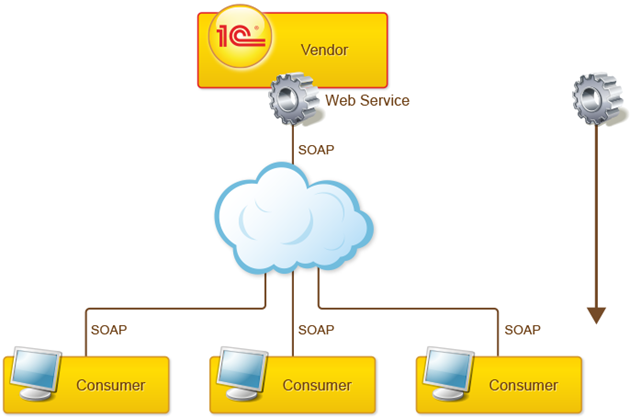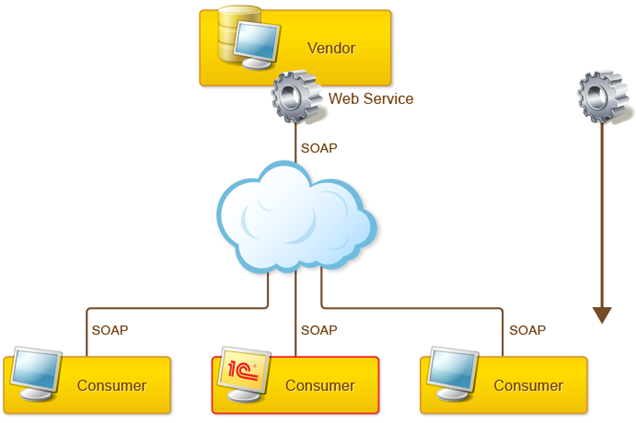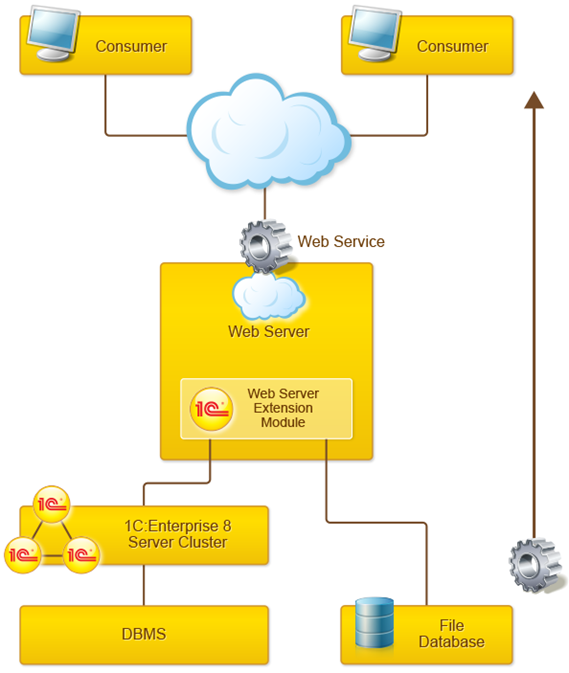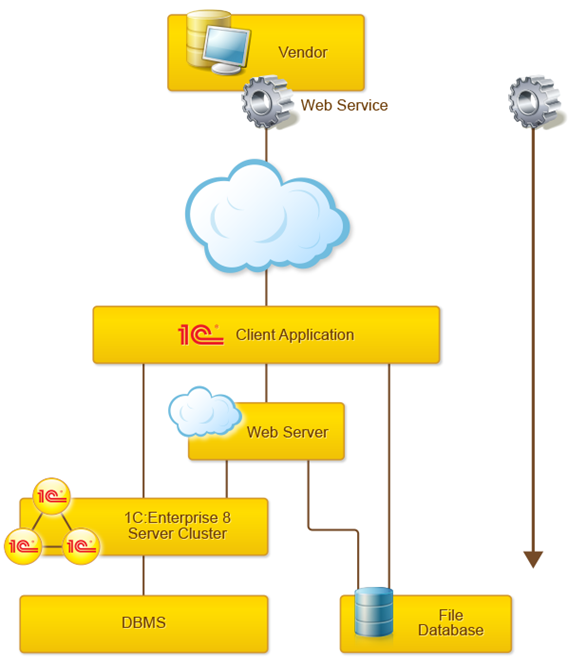Web services constitute one of the platform mechanisms used for integration with other data systems. A web service is a part of the Service-Oriented Architecture (SOA) which is a modern application and data system integration standard.
A valuable benefit of a service-oriented architecture is that it allows developing an enterprise's infrastructure homogeneously, without disrupting the existing solutions. Using a service-oriented structure helps minimize costs through integrating heterogeneous and legacy systems into the enterprise's environment. That architecture allows executing poorly-linked program components in order to increase their reusability.
Major vendors intensely develop and support service-oriented structures. Such a structure is based on services that may be autonomous or controlled from the outside. The most preferable format of such services is web services. Web services are not platform-depending, autonomous, and supported everywhere.
A 1C:Enterprise 8 application can be both a web service vendor and consumer of other vendors' web services.
- 1C:Enterprise as a Web Service Vendor

Consumers can be systems employing arbitrary hardware and software platforms. The web service technology is not platform-depending.
- 1C:Enterprise as a Web Service Consumer

Web Service Implementation
If an application is a web service vendor, then both in the file and client/server modes, the application and web service consumers interact through the webserver with the help of a web server extension module.

With that, when a consumer refers to an application web service, the web service's extension module is executed. This module is part of the configuration and contains the procedures executed when some web service operations are activated.
For a client/server mode, this module is executed in the cluster. For a file mode, the module is executed in the web server extension module.
If an application is a consumer of a third-party vendor's web service, the interaction between the application and web service vendor is executed through the client application. It activates certain web service operations and processes the obtained data.

As a web service consumer, 1C:Enterprise supports the optimized transmission of binary data over the MTOM protocol. MTOM is automatically enabled in 1C:Enterprise.
Next page: XML documents

